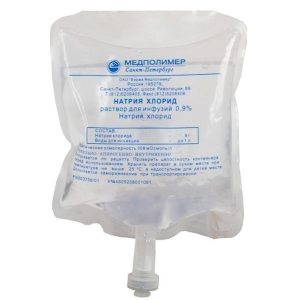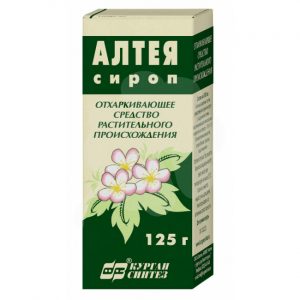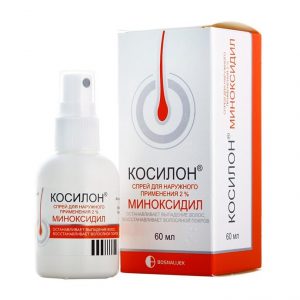Description
Dosage form
film-coated tablets
Packing
28 pcs.
Pharmacological action of
Lenuxin is an antidepressant, a selective serotonin reuptake inhibitor (SSRI) that increases the concentration of the neurotransmitter in the synaptic cleft, enhances and prolongs the effect of serotonin on postsynaptic receptors.
Escitalopram practically does not bind to serotonin (5-HT), dopamine (D1 and D2), alpha-adrenergic, histamine, m-cholinergic receptors, as well as benzodiazepine and opioid receptors.
The antidepressant effect usually develops 2-4 weeks after the start of administration.
The maximum therapeutic effect of treating panic disorders is achieved approximately 3 months after the start of treatment.
Indications
depression moderate or severe
panic disorder with or without agoraphobia
social anxiety disorder (social phobia)
generalized anxiety disorder.
Contraindications
children and adolescents (up to 18 years old)
concomitant use with MAO inhibitors
sucrose / isomaltase deficiency, fructose intolerance and glucose-galactose malabsorption, since the drug has an increased sensitivity to sucrose
.
Precautions: renal failure (creatinine clearance below 30 ml / min), hypomania, mania, pharmacologically uncontrolled epilepsy, depression with suicidal attempts, diabetes mellitus, advanced age, liver cirrhosis, a tendency to bleed, while taking medications that lower the seizure threshold and causing hyponatremia, with ethanol, as well as with drugs metabolized by the CYP2C19 isoenzyme.
Special instructions
Escitalopram cannot be prescribed simultaneously with MAO inhibitors because of the risk of developing serotonin syndrome. Escitalopram can be prescribed 14 days after discontinuation of treatment with irreversible MAO inhibitors and at least 1 day after discontinuation of therapy with a reversible MAO inhibitor type A (moclobemide). At least 7 days should elapse after escitalopram is taken before treatment with non-selective MAO inhibitors can begin.
In children, adolescents and young people (under 24 years old) with depression and other mental disorders, antidepressants, compared with placebo, increase the risk of suicidal thoughts and suicidal behavior.
Therefore, when prescribing the drug Lenuxin or any other antidepressants, children, adolescents and young people (under 24 years old) should correlate the risk of suicide and the benefits of their use. In the event that a decision is made to initiate antidepressant therapy, the patient should be closely monitored for the early detection of disorders or changes in behavior, as well as suicidal tendencies.
When using drugs belonging to the SSRI therapeutic group, including escitalopram, the following should be considered: in some patients with panic disorder, an increase in anxiety may be observed at the beginning of treatment with SSRIs. Such a paradoxical reaction usually disappears within the first two weeks of treatment. To reduce the likelihood of an anxiogenic effect, it is recommended to use low initial doses.
The drug should be discontinued if convulsive seizures develop. Use in patients with unstable epilepsy with controlled seizures is not recommended careful monitoring. With an increase in the frequency of convulsive seizures, SSRIs, including escitalopram, should be abolished.
The use of SSRIs and SSRIs (selective noradrenaline reuptake inhibitors) is associated with the development of akathisia, a condition characterized by an unpleasant debilitating feeling of anxiety and hyperactivity and is often accompanied by an inability to sit or stand in one place. This condition most likely occurs during the first few weeks of therapy. Increasing the dose can harm patients who have these symptoms.
Escitalopram should be used with caution in patients with a history of mania / hypomania. With the development of a manic state, escitalopram should be abolished.
In patients with diabetes mellitus, treatment with escitalopram may alter blood glucose levels. Therefore, dose adjustment of insulin and / or oral hypoglycemic drugs may be required.
The risk of suicide is inherent to depression and can persist until a significant improvement in the condition that occurs spontaneously or as a result of therapy. Careful monitoring of patients undergoing antidepressant treatment is necessary, especially at the beginning of treatment due to the possibility of clinical deterioration and / or the appearance of suicidal manifestations (thoughts and behavior). This precaution should be observed in the treatment of other mental disorders because of the possibility of a simultaneous illness with a depressive episode.
Hyponatremia, possibly associated with impaired ADH secretion, rarely occurs with escitalopram and usually disappears when therapy is discontinued. Caution should be exercised when prescribing escitalopram and other SSRIs to people at risk of developing hyponatremia: the elderly, patients with liver cirrhosis and taking drugs that can cause hyponatremia.
When taking escitalopram, skin hemorrhages (ecchymosis and purpura) may develop. It is necessary to use escitalopram with caution in patients with a tendency to bleeding, as well as taking oral anticoagulants and drugs that affect blood coagulation.
Since clinical experience with the simultaneous use of escitalopram and ECT (electroconvulsive therapy) is limited, caution should be exercised in such cases.
In patients taking escitalopram and other SSRIs concurrently with serotonergic drugs, in rare cases, serotonin syndrome may develop. It is necessary to use escitalopram with caution simultaneously with drugs that have a serotonergic effect.
Due to limited clinical experience, caution is advised when using the drug in patients with coronary artery disease.
After prolonged use, a sharp cessation of escitalopram therapy in some patients may lead to a withdrawal reaction. Undesirable reactions such as dizziness, headaches, and nausea may occur. The severity of these reactions is usually insignificant, and the duration is limited. To avoid the occurrence of withdrawal reactions, gradual discontinuation of the drug within 1-2 weeks is recommended.
Ethanol Interaction
Escitalopram does not enter into pharmacodynamic or pharmacokinetic interaction with ethanol. However, as with other antidepressants, you should refrain from drinking alcohol during the entire period of treatment with the drug.
Influence on the ability to drive vehicles and control mechanisms
During the treatment period, it is necessary to refrain from driving vehicles and engaging in potentially dangerous activities that require an increased concentration of attention and speed of psychomotor reactions.
Composition
Active ingredient:
escitalopram oxalate – 10 mg
Excipients:
MCC
croscarmellose sodium
talc
siliconized MCC 90 (Prosolv 90)
siliconized MCC HD90 (Prosolv HD90)
magnesium stearate
Film sheath:
33 white 10%, 38rd2, 10%, 6ad – 25%, lactose monohydrate – 21%, macrogol 3350 – 8%, glycerol triacetate (triacetin) – 6%)
Dosage and administration of
Lenuxin is taken orally, once a day, regardless of food intake.
Depression
The usual dose is 10 mg once daily. Depending on the individual reaction of the patient, the dose can be increased to a maximum of 20 mg per day.
After the symptoms of depression disappear, it is necessary to continue therapy to consolidate the effect for 6 months.
Panic conditions with or without agoraphobia
Recommended starting dose of 5 mg per day for the first week, then 10 to 20 mg per day. The maximum daily dose is 20 mg per day.
Maximum effectiveness is achieved after about 3 months. The duration of treatment is several months.
Sociophobia
The usual dose is 10 mg once daily. It usually takes 2-4 weeks to alleviate the symptoms. The dose can be gradually reduced, depending on the individual reaction of the patient, to 5 mg or increased to 20 mg per day.
Generalized Anxiety Disorders
The initial dose is 10 mg once daily. The maximum daily dose is 20 mg. The duration of treatment is at least 6 months.
Elderly patients (> 65 years) The recommended dose is 5 mg per day, the maximum daily dose is 10 mg.
Impaired renal function
Dosage adjustment is not required for mild to moderate renal failure. Caution is recommended in patients with severe renal impairment (CLCR less than 30 ml / min).
Impaired liver function
Recommended starting dose of 5 mg per day with decreased liver function for the first two weeks. Depending on the individual response of the patient, the dose may be increased to 10 mg per day. Caution and extreme caution in increasing the dose are recommended in patients with severely impaired liver function.
Inadequate CYP2C19 metabolism
For patients with weak CYP2C19 isoenzyme activity, the recommended starting dose is 5 mg per day for the first two weeks of treatment. Depending on the individual response of the patient, the dose may be increased to 10 mg per day.
Discontinuation of treatment
Upon discontinuation of treatment, the dose should be gradually reduced over 1 to 2 weeks in order to avoid the occurrence of “withdrawal” syndrome.
Side effects
Side effects most often occur in the first or second week of treatment with the drug and then usually become less intense and occur less often with continued therapy.
WHO classification of unwanted adverse reactions according to the frequency of development: very frequent – 1/10 appointments (> 10%), frequent – 1/100 appointments (> 1% and <10%), infrequent - 1/1000 appointments (> 0.1% and <1%), rare - 1/10 000 appointments (> 0.01% and <0. 1%), very rare - 1/10 000 appointments (<0.01%). From the side of the central nervous system: often – headache, dizziness, weakness, insomnia or drowsiness, convulsions, tremors, movement disorders, serotonin syndrome (agitation, tremor, myoclonus, hyperthermia less often – hallucinations, mania, confusion, agitation, anxiety, depersonalization panic attacks, increased irritability, visual disturbances From the digestive system: very often – nausea, vomiting often – diarrhea, dry mouth, taste disturbances, decreased appetite or vice versa, increased constipation, Co with torons of the skin: often – excessive sweating, less often – skin rash, itching, ecchymosis, purpura, angioedema. From the reproductive system: often – violation of ejaculation, impotence, menstrual irregularities are possible. From the urinary system: often – urinary retention. On the part of the body as a whole: often – weakness, less often hyperthermia. Metabolic disorders: rarely – insufficient secretion of antidiuretic hormone (ADH). From the cardiovascular system: infrequently – orthostatic hypotension. Laboratory indicators: often – a change in laboratory parameters of liver function, hyponatremia and changes in the electrocardiogram (lengthening the QT interval, expanding the QRS complex, changing the ST segment and T wave). From the musculoskeletal system: infrequently – arthralgia, myalgia. Allergic reactions: in some cases anaphylactic reactions are possible. Patient should be informed that that if any of the side effects specified in the instructions are aggravated or any other side effects not listed in the instructions appear, the doctor should be informed. Drug interactions drugs acting on the central nervous system. Caution must be exercised while taking central drugs with other drugs. Alcohol. Although escitalopram does not potentiate the effects of alcohol (clinical studies), as is the case with other psychotropic drugs, the simultaneous use of escitalopram and alcohol is not recommended. MAO inhibitors. Incompatible with MAO inhibitors. Drugs that affect blood coagulation (NSAIDs, acetylsalicylic acid, warfarin, etc.). The release of serotonin from platelets plays an important role in hemostasis. Epidemiological studies (both a case-control study and a cohort study) have demonstrated a relationship between the use of psychotropic drugs that affect serotonin reuptake and the frequency of bleeding from the upper gastrointestinal tract. In two studies, the simultaneous use of NSAIDs, including acetylsalicylic acid potentiated the risk of bleeding. Although these studies focused on bleeding from the lower gastrointestinal tract, there is reason to believe that bleeding and other localizations are possible, therefore, while taking escitalopram and drugs that affect blood coagulation, caution and monitoring of blood coagulation are necessary. lithium. Lithium can enhance the serotonergic effect of escitalopram, so care should be taken when used together. sumatriptan. There are rare post-marketing reports about the development of patients with weakness, hyperreflexia and impaired coordination of movements when using SSRIs and sumatriptan. If the use of sumatriptan and SSRIs (such as fluoxetine, fluvoxamine, paroxetine, sertraline, citalopram, escitalopram) is clinically justified, appropriate patient monitoring is recommended. carbamazepine. Carbamazepine, inducing microsomal liver enzymes, can increase the clearance of escitalopram, which should be borne in mind with the simultaneous administration of these drugs. ritonavir. The combined use of a single dose of ritonavir (600 mg), which is both a substrate and a potent inhibitor of CYP3A4, and escitalopram (20 mg) was not accompanied by a change in the pharmacokinetics of either ritonavir or escitalopram. In vitro studies did not reveal the inhibitory effect of escitalopram on CYP3A4, CYP1A2, CYP2C9, CYP2C19 and CYP2E1. Based on these data, a weak effect on the metabolism mediated by this group of cytochrome P450 enzymes in vivo is assumed. CYP3A4 and CYP2C9 inhibitors. In vitro studies show that CYP3A4 and CYP2C9 are the main enzymes involved in the metabolism of escitalopram. However, co-administration of escitalopram (20 mg) and ritonavir (600 mg), a potent inhibitor of CYP3A4, did not significantly affect the pharmacokinetics of escitalopram. Since escitalopram is metabolized by various enzyme systems, inhibition of one enzyme cannot significantly reduce the clearance of escitalopram. drugs metabolized by the cytochrome P450 isoenzyme CYP2D6. In vitro studies did not reveal the inhibitory effect of escitalopram on CYP2D6. In addition, the equilibrium levels of citalopram racemate did not significantly differ in weak and strong CYP2D6 metabolites. This indicates the low likelihood of a clinically significant effect of CYP2D6 inhibitors on the metabolism of escitalopram. However, limited in vivo data show a moderate CYP2D6-inhibitory effect of escitalopram: the combined use of escitalopram (21 mg / day for 21 days) with a tricyclic antidepressant desipramine (a single dose of 50 mg), a substrate of CYP2D6, led to a 40% increase in Cmax and a 100% increase in AUC of desipramine. The clinical significance of this observation is unknown. Nevertheless, caution is shown with the combined use of escitalopram and drugs metabolized with the participation of CYP2D6. metoprolol. Admission by healthy volunteers of 20 mg / day of escitalopram for 21 days led to a 50% increase in Cmax and 82% increase in AUC of metoprolol (a single dose of 100 mg). With an increase in the plasma level of metoprolol, a decrease in cardioselectivity was observed. The combined administration of escitalopram and metoprolol did not have a clinically significant effect on blood pressure and heart rate. Electroconvulsive therapy. There are no clinical studies on the combined use of electroconvulsive therapy and escitalopram. Since escitalopram is the active isomer of citalopram racemate, these two drugs cannot be used simultaneously. Overdose Symptoms: dizziness, tremor, agitation, drowsiness, unconsciousness, convulsions, tachycardia, ECG changes with ST-T changes, QRS complex extension, QT interval prolongation, arrhythmias, respiratory depression, vomiting, rhabdomyolysis, metabolic acidosis, hypokalemia. Treatment: There is no specific antidote. Provide air intake pathways, adequate oxygenation and respiratory function. Gastric lavage should be performed as soon as possible after oral administration. Apply activated charcoal. It is recommended to monitor the function of the heart and the main indicators of the state of the body, as well as to conduct general symptomatic supportive therapy. Storage Conditions The product should be stored out of reach of children, protected from light at a temperature not exceeding 30 ° C. Shelf life 2 years. Deystvuyushtee substance stsitalopram Conditions of release from pharmacies prescription Dosage form tablets Possible product names LENUKSIN 0,01 N28 TABLE P / O LENUKSIN 10MG. No. 28 TAB. P / O Lenuxin tab p / p / o 10mg N28 Lenuxin tab. 10mg No. 28 LENUKSIN TAB. P.P.O. 10MG No. 28




